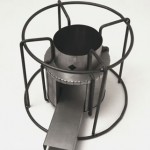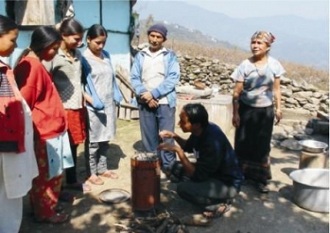Aerosol and Air Quality Research, 12: 463–475, 2012
Quantification of Indoor Air Pollution from Using Cookstoves and Estimation of Its Health Effects on Adult Women in Northwest Bangladesh
Zohir Chowdhury, et al.
A longitudinal stove intervention study was conducted in Northwest Bangladesh between August 2005 and June 2009 to quantify the reduction of indoor air pollution from a Bangladeshi manufactured and commercialized cookstove (the BCSIR improved stove). In the post-intervention phase of the study, the indoor particulate matter (PM) size distribution and chemical composition, as well as carbon monoxide (CO) concentration, were characterized in 40 kitchens, 50% with the BCSIR improved stoves and 50% with traditional stoves.
The TSI DustTrak, P-TRAK and Q-TRAK Plus, along with the UCB Particle Monitor and the Onset HOBO, were simultaneously deployed to continuously characterize Carbon Monoxide (CO) and Particulate Matter (PM). Detailed chemical composition was quantified from X-Ray Flouroscence and Carbon Analyzer. Median 24-hr concentrations for CO and PM2.5 were 2.5 mg/m3 and 1.8 mg/m3, respectively, for the unimproved mud stove kitchens and were 2.0 mg/m3 and 0.73 mg/m3, respectively, for the BCSIR improved stove kitchens.
These differences were equivalent to 23% and 59% reduction of CO and PM2.5 concentrations, respectively. The cook’s daily exposure was estimated from these measurements to assess health impacts. Ultrafine particle number concentrations were 15,000 ± 7,200 pt/cm3 during non-cooking periods and 75,000 ± 31,000 pt/cm3 during cooking periods. Of the chemical composition of the PM2.5 emitted from cooking, 59–60% was organic matter and 29–30% was elemental carbon. The predominant chemical species were elemental carbon (EC), organic carbon (OC), chlorine, and potassium.
These results demonstrate possible reduction of PM and CO from cooking with improved stoves in rural areas in Bangladesh where solid fuels are used for cooking.





